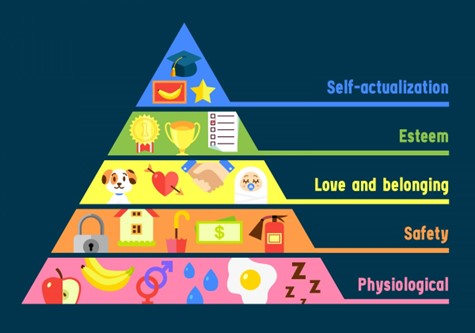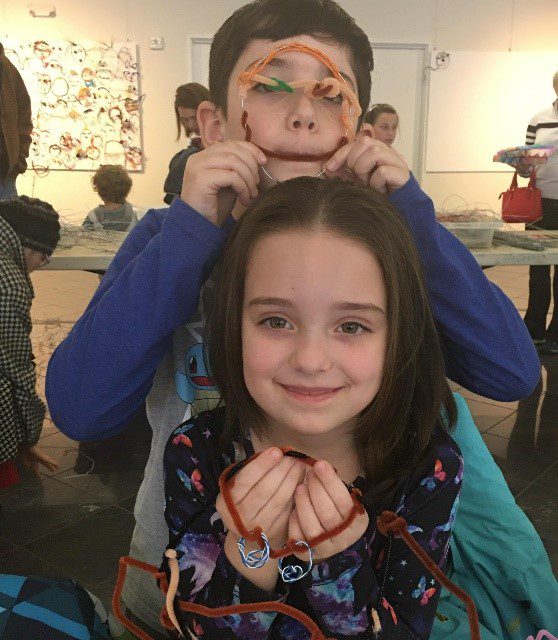Written By: Samantha Becker, MS, OTR/L
 Maslow’s Hierarchy of Needs
Maslow’s Hierarchy of Needs
In order to achieve self-actualization, or fulfillment of a person’s talents and potential, you must have a solid foundation where your physiological, safety, belonging, and esteem needs are met. Developing children are learning their place in the world and require their physiological and safety needs to be met in order to learn to love and be loved, to believe in themselves, and ultimately to meet their full potential. Physiological needs include sleep, nutrition, hydration, and warmth (including appropriate clothing and housing). Physical, financial, and emotional safety is imperative to prepare a child to learn how to build relationships with others, feel confident within themselves, and develop cognitively. Physical safety includes access to medical care and a safe home. Emotional safety includes the feeling of being safe within their family, within their learning environment, and within the relationships they build.
 Love and Belonging
Love and Belonging
Children develop the ability to love and feel a sense of belonging within their social environment throughout their childhood. The earliest relationship develops with their mother, followed by other members of their family and close caregivers. Connection is the basis for learning how to be an active member in all types of relationships with others. The ability to understand a wide range of emotions supports children to develop deeper relationships with family, friends, teachers, and other community members.
Activities to Help a Child Learn Emotions:
- Reading books, singing songs, or performing finger plays while acting out different emotions
- Feeling buddies https://consciousdiscipline.com/store-category/feeling-buddies/
- Turn-taking activities
- Conversations
- Games
- Sharing materials
- Emotion-related books
- https://youtu.be/BpOHIfJgMcw
- https://youtu.be/ORSy41By3y4
- https://youtu.be/jhpEetRseXE
 Esteem
Esteem
Self-esteem develops as a child begins to show pride in their accomplishments. Children typically strive to share these accomplishments with their closest relationships. Esteem needs are met through achievement in challenging tasks such as academic work, physical challenges, or social acceptance from others.
Activities to Support the Development of Self-Esteem:
- Provide the “just right” challenge
- Give guidance, praise, and encouragement and wait time before stepping in to assist
- Allow choice making
- Hold two items and allow a toddler to pick
- Provide a picture menu for food and/or TV choices
- Allow a child to pick out their own clothing
- Encourage team activities or games where the group works together to achieve a task
 Self-Actualization
Self-Actualization
Self-actualization is the process in which a person becomes everything they are uniquely capable of becoming. In other words, how can a person individually contribute to the world around them? This requires the integration of skills in order to build a distinctive person. In turn, the development of self-actualization allows a person to feel fulfilled with their lives and give back to the people around them.
Activities to Support Self-Actualization:
- Providing a creative outlet with the ability to freely follow their interest without too many stipulations
- Encourage the obtainment of the “flow” state
- Explain your thought process to approach a challenge while accepting the child’s different perspective, encouraging exploring their ideas
- Participate in volunteer work or activities that give back to the community
Application to Social Development
All individuals who interact with children can influence their social development. Social development is a constant factor in all other areas of development. From the earliest stages of bonding through the development of a plan for a child transitioning into adulthood, children are participating in the fluid development of their social being.
Interested in learning more? Mark your calendar for my upcoming Summit Live Webinar on March 29th, Social and Emotional Development. This course will provide an overview of social-emotional development from birth through adolescence. You will leave this course with a better understanding of social-emotional development to integrate into treatment planning when working with children ages birth through adolescence.
Visit summit-education.com for more information.
References:
Delahooke, M. (2019). Beyond Behaviors: Using Brain Science and Compassion to Understand and Solve Children’s Behavioral Challenges. PESI Publishing & Media.
Noltemeyer, A., James, A. G., Bush, K., Bergan, D., Barrios, V., & Patton, J. (2021). The relationship between deficiency needs and growth needs: The continuing investigation of Maslow’s Theory. Child & Youth Services. Vol. 42 Iss. 1. Pp 24-42.
